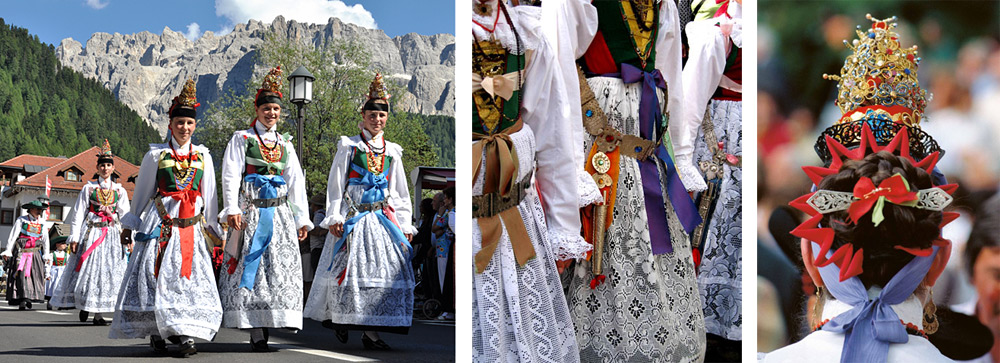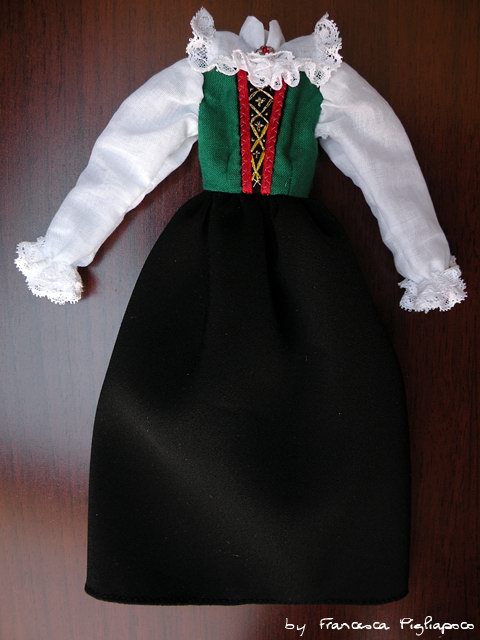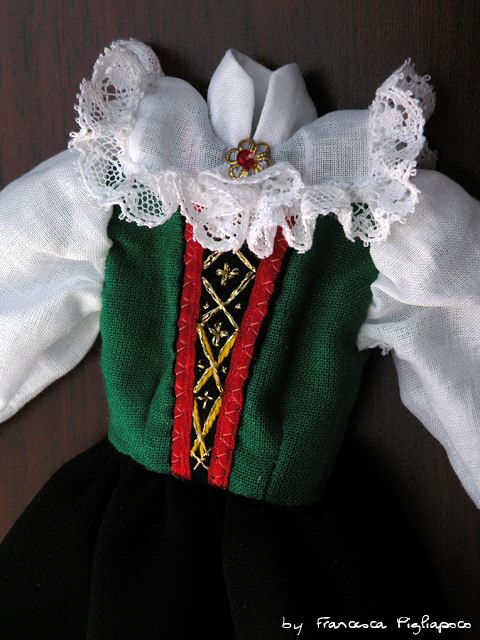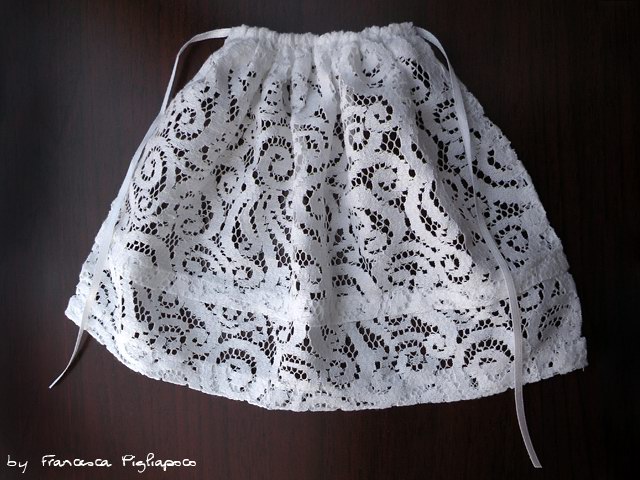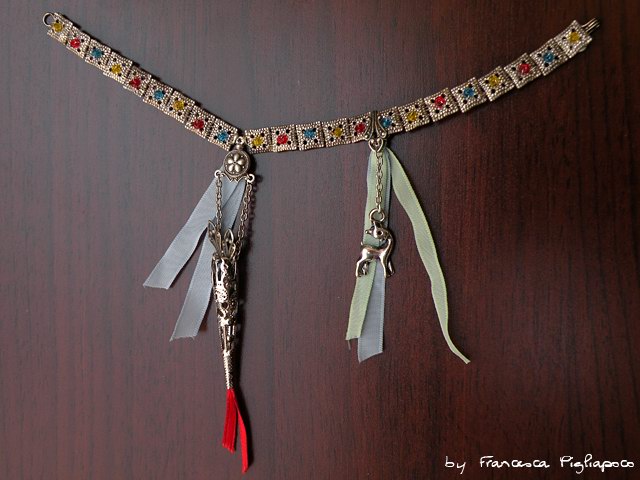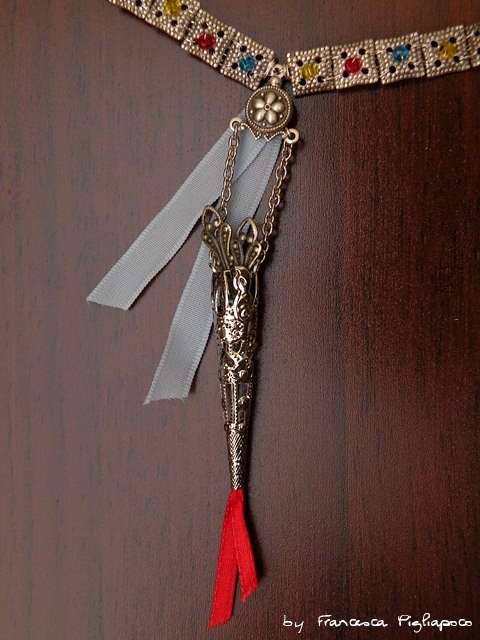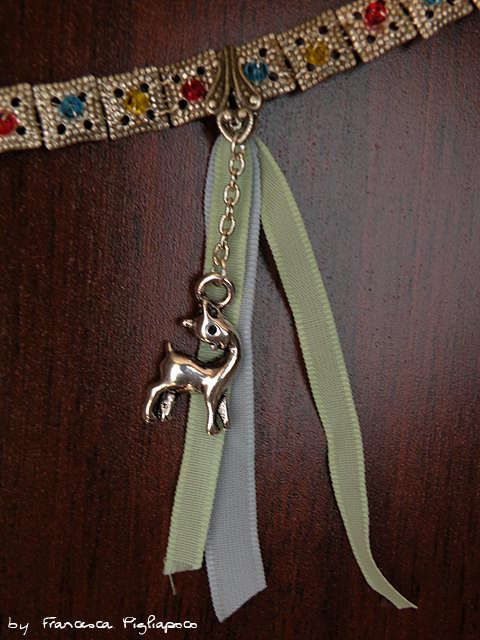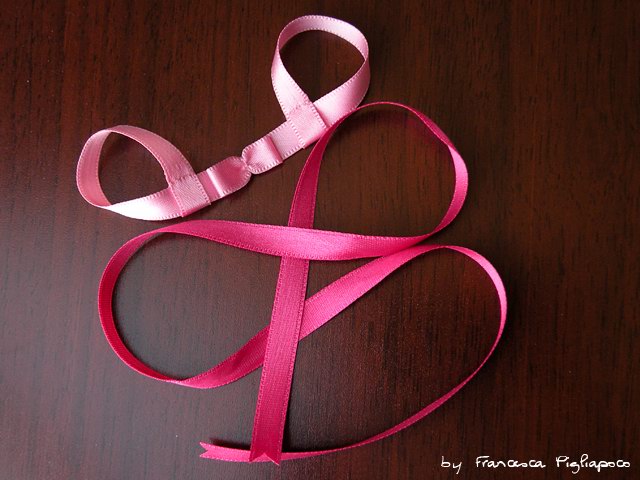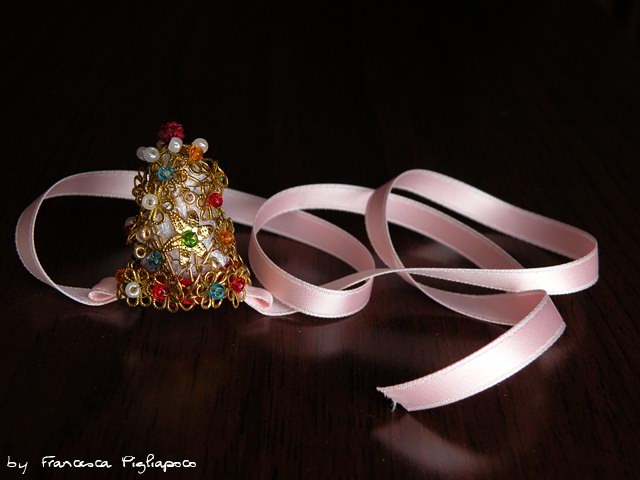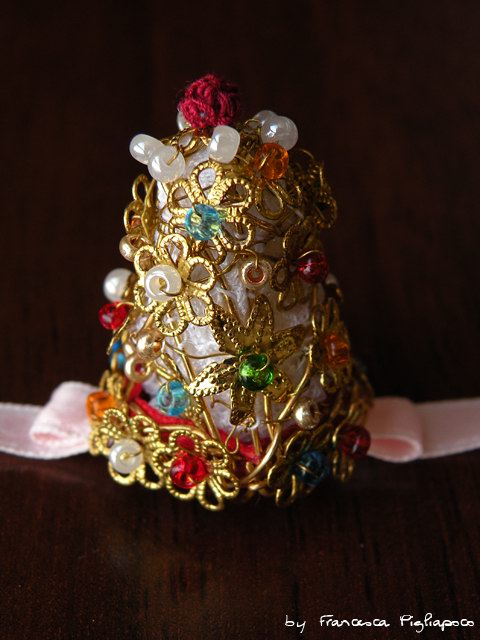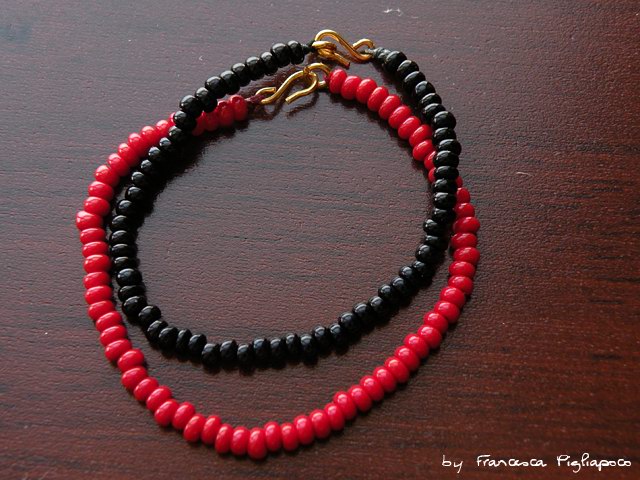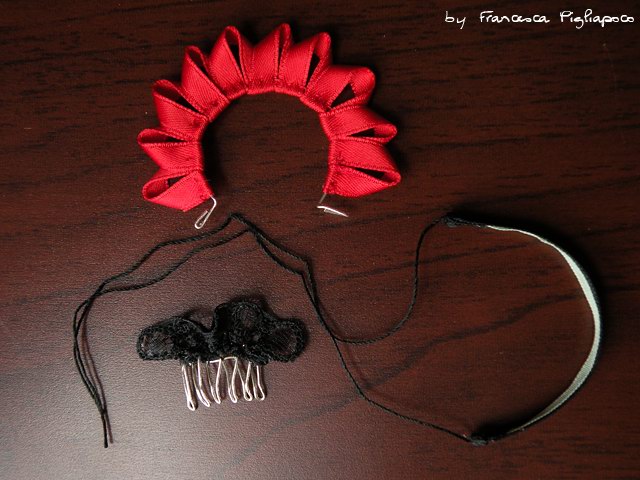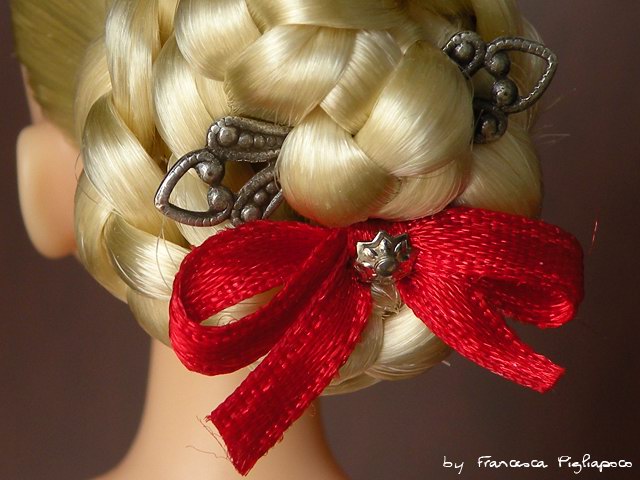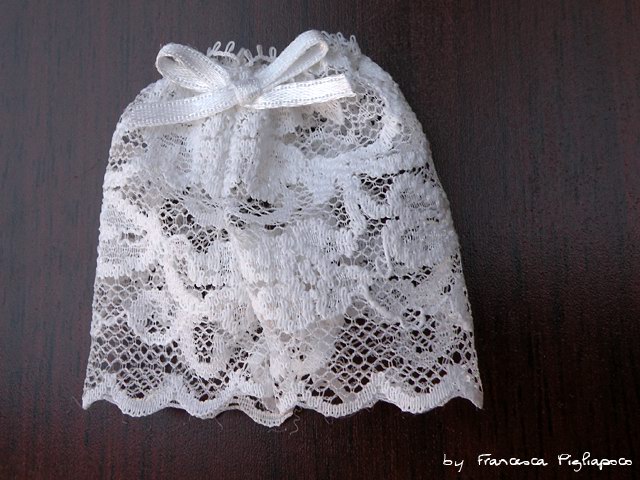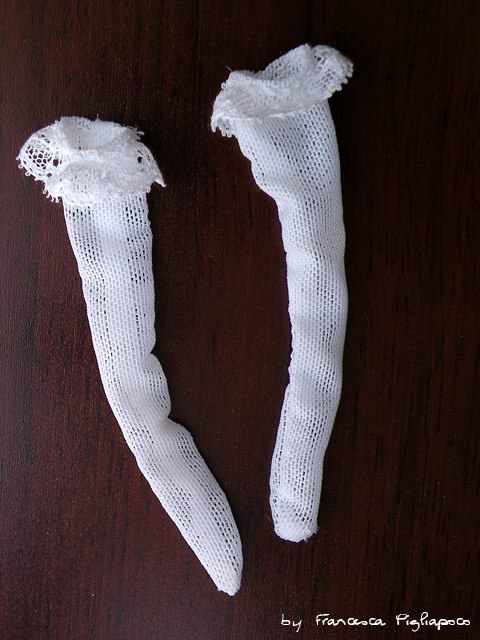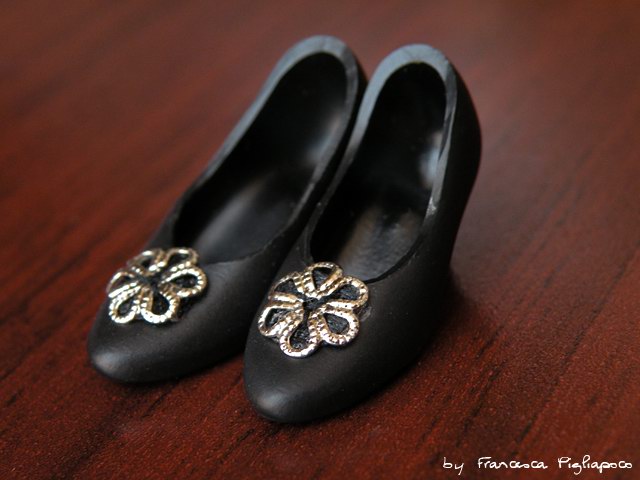 Il costume tradizionale gardenese è uno dei più belli dell’Alto Adige, ma anche dell’intero arco alpino. Il costume tradizionale gardenese è uno dei più belli dell’Alto Adige, ma anche dell’intero arco alpino.
Negli ultimi secoli purtroppo questo costume ha perso la sua funzione come abbigliamento quotidiano. Oggi viene per lo più indossato solo per eventi importanti come per esempio feste religiose, processioni, sagre o cortei e a volte anche per un matrimonio.
La ricchezza e l'originalità di questi costumi è dovuta al fatto che gli antenati ebbero la possibilità, girando per il mondo, di conoscere cose nuove e di acquistare sete, nastri, stoffe, pizzi e gioielli.
La caratteristica principale dei costumi gardenesi, forse addirittura la loro unicità, consiste nel fatto, che essi devono essere considerati nel loro insieme, come un tutto organico. L’occasione principale in cui i costumi venivano indossati era il corteo di nozze. Un tempo ciascuno di essi rappresentava visivamente uno stato sociale ben definito e mostrava le relazioni interpersonali dei vari componenti del gruppo.
La gherlanda spiza è l'elemento distintivo del costume delle ragazze gardenesi. Si tratta di una coroncina raffinata composta da un'alta struttura appuntita e dorata sulla quale sono applicati pietre, perle e fiori di filigrana dorata. É trattenuta sul capo tramite un nastro nero per capelli (frisc). Il capo è inoltre decorato con un nastro rosso piegato a formare una stella, un pettine finemente lavorato e alcuni spilloni. Sulla fronte le ragazze portano un nastro di velluto nero.
Anche l'abito è riccamente decorato ed è realizzato con i materiali più pregiati di cui disponeva la società contadina di un tempo: fiocchi di seta colorati, nastri multicolori, svariate collane e numerosi altri gioielli. Notevole è anche la cintura ornamentale in argento (cënta) con incastonate pietre preziose. Sulla destra è appeso l'astuccio d'argento con le posate e, sulla sinistra, la sagoma in argento dell'agnello, emblema della diocesi di Bolzano - Bressanone.
|
 The traditional costume of Valgardena is one of the most beautiful of the entire Alpine area. The traditional costume of Valgardena is one of the most beautiful of the entire Alpine area.
In the last decades, however, this costume has no longer been used as everyday clothes. Today people only wear it on special occasions such as religious feast days, parades and occasionally it is also worn as wedding dress.
What is so particular about this costume is that each layer of society distinguished themselves by a different costume, also depending on the age and civil status.
One might ask why so many of the costumes are so ornate making use of silk, lace, jewels, ribbon and different fabrics considering the fact that they were worn by simple mountain folk. These fabrics were brought to the area by the lucky few who traveled further a field. Originally the costumes were used for weddings and other such important occasions hence their detail and richness. It is interesting and worthwhile to consider all the costumes together as there is an untold story behind, which involves the age and social status of the individuals. Nowadays people wear them in religious processions and folkloristic festivities.
The “gherlanda spiza” is a distinctive element of the Val Gardena girls’ costume. It is an elaborate crown made from a tall, pointed golden frame decorated with stones, beads and gold filigree flowers. It is tied to the head with a black hair ribbon (frisc). The head is also decorated with a red ribbon tied into a star shape, a finely decorated comb and some hairpins. The girls wear a black velvet ribbon around the forehead.
The dress is also richly decorated, made from the finest materials available in the rural society of yesteryear: embroidered silk bows, multicoloured ribbons, with plenty of necklaces and other jewellery besides. The ornamental silver belt (cënta) is inlaid with precious stones. On the right hangs a silver pochette holding cutlery, and on the left a silver shaped lamb, the emblem of the diocese of Bolzano - Bressanone.
|
